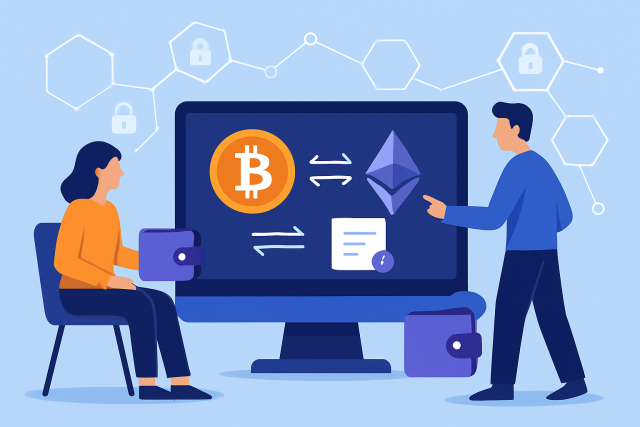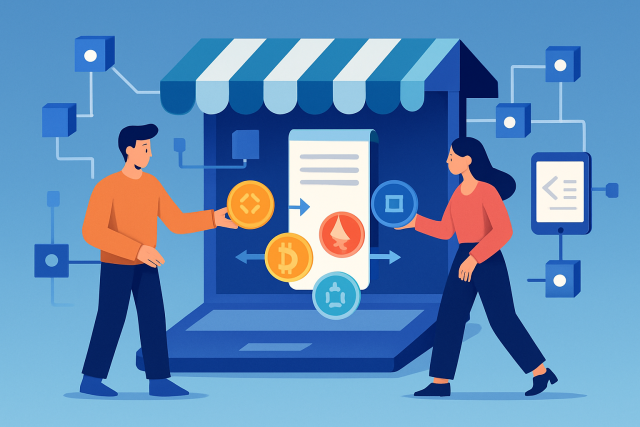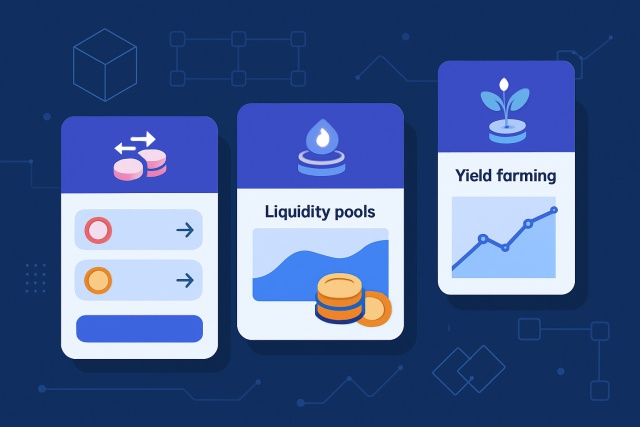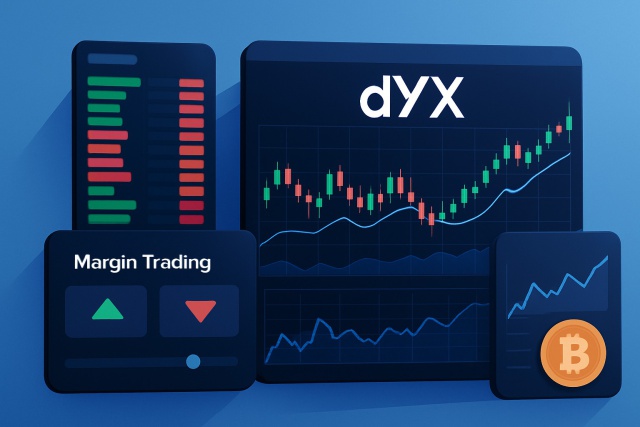Top decentralized exchanges DEX for easy crypto swaps

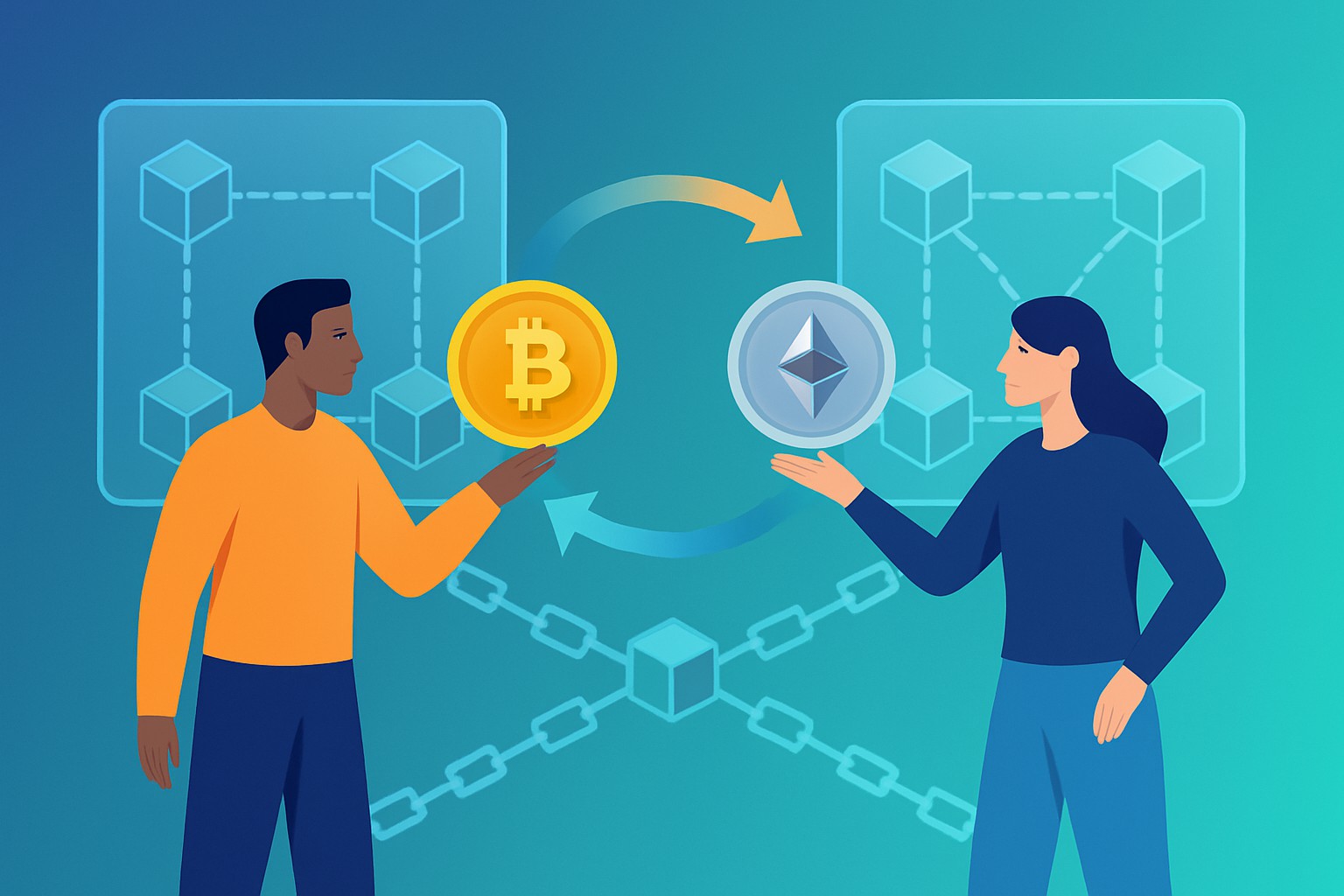
The top decentralized exchanges (DEX) are shaking up the crypto trading scene by enabling smooth and trustless swaps without relying on centralized middlemen.
This article presents a thoughtfully curated list of the top decentralized exchanges (DEXs) handpicked after serious digging and evaluation. We have laid out the criteria behind our picks focusing on security, liquidity, fees and how user-friendly each platform really is.
So, What Exactly Are Decentralized Exchanges (DEX)
Decentralized exchanges or DEXs are online platforms where users get to trade cryptocurrencies directly with each other, no middlemen poking their noses in. They operate on blockchain technology and rely on smart contracts to keep transactions both secure and transparent.
DEXs bring clear perks compared to their centralized cousins. For starters, users hold the reins when it comes to their private keys and funds. This usually translates to better security—think fewer sleepless nights worrying about hacks or insolvency. Privacy gets a boost too since most of the time you can skip the KYC hassle. And let’s not forget censorship resistance, meaning no single party can step in and freeze or block your assets.
How We Went About Picking the Leading Decentralized Exchanges
Our ranking of the leading decentralized exchanges stems from a careful review that combines solid metrics with a genuine focus on what users actually experience. We took a good hard look at security protections and liquidity levels. We also examined fee structures, user-friendliness, the variety of supported assets, and how each platform drives innovation.
- We focused on exchanges with verified security measures and completed smart contract audits because keeping user funds safe is essential.
- We also looked at trading volume and liquidity depth to ensure swaps go smoothly without unexpected price changes.
- Fee structures were carefully examined since finding platforms that won’t silently drain your wallet was important.
- Ease of use and a polished user interface mattered a lot because if it feels complicated most people won’t stick around.
- Access to advanced features like yield farming, lending and limit orders helped some platforms rise in the rankings.
- Cross-chain compatibility is essential for flexibility and to support a wider range of assets.
- Finally, a vibrant community and active developers provide a good sign of stability and ongoing improvements since nothing lasts in isolation.
1. Uniswap as the Go-To Pick for Ethereum Swaps on DEXs
Uniswap is the original decentralized exchange that really put automated market maker (AMM) technology on the map. Instead of fiddling with order books, it relies on liquidity pools to keep token swaps flowing smoothly on the Ethereum network.
Uniswap is known for its clear and straightforward user interface, making it a breeze for newcomers to find their way around. The platform has also built up a good level of trust within its community which is no small feat these days. With access to thousands of ERC-20 tokens, users can pick and choose from a vast buffet of assets.
2. PancakeSwap One of the Leading Decentralized Exchanges on Binance Smart Chain
PancakeSwap shines as the go-to decentralized exchange on Binance Smart Chain with low fees and speedy transaction confirmations that rarely leave you tapping your foot. Its vibrant ecosystem is bursting with fun stuff like yield farming, lotteries and NFTs.
Security gets a solid boost thanks to regular audits and a well-defined governance framework that keeps things on the straight and narrow. PancakeSwap juggles a broad range of BEP-20 tokens and offers plenty of liquidity to cover most trades without breaking a sweat. Its reward features like staking CAKE tokens are a clever nudge to keep users coming back for more. The interface strikes a nice balance by offering advanced options while staying easy to navigate
3. SushiSwap A Nimble, Community-Driven DEX That Keeps Things Flexible
SushiSwap started as a community-driven fork of Uniswap and since then it has blossomed into a multi-chain decentralized exchange with a diverse array of DeFi tools. The governance is firmly in the hands of token holders which means development tends to follow the community's lead and stays aligned with what users want.
SushiSwap manages to carve out its own niche among DEXs thanks to some pretty neat features like Kashi lending, which opens the door to margin trading and lending markets. Then there’s BentoBox vaults, designed to squeeze every last drop of yield from your assets.
4. Curve Finance The Go-To Pick for Stablecoin Swaps
Curve Finance is a decentralized exchange crafted with a laser focus on swapping stablecoins and wrapped tokens, boasting incredibly low slippage and fees so minimal you might almost forget they are there. Its clever algorithmic AMM pools zero in on assets with pretty much the same value, turning it into a go-to spot for stablecoin liquidity providers and traders who want to move stable-value assets around without the usual hassle.
Curve’s liquidity pools rely on a clever algorithm that strikes a fine balance between capital efficiency and stability, making sure prices stay snugly close to equal across stablecoins. It’s become a real cornerstone in the DeFi world, backing everything from lending platforms and yield aggregators to cross-chain protocols.
5. 1inch Your Go-To Aggregator That Sniffs Out the Best Swap Rates
1inch is a decentralized exchange aggregator that scoops up liquidity from multiple DEXs at once with the goal of giving users the best swap rates and lowest fees. It splits orders into smaller chunks across various platforms to cut down slippage and boost transaction efficiency on Ethereum, Binance Smart Chain, Polygon and other networks.
Alongside its competitive pricing, 1inch brings to the table handy features like gas fee optimization and customizable transaction settings. It supports a whole bunch of blockchains and boasts a easy-to-use interface, making it a go-to favorite for traders who want to snag the best swaps without hopping between different DEXs themselves.
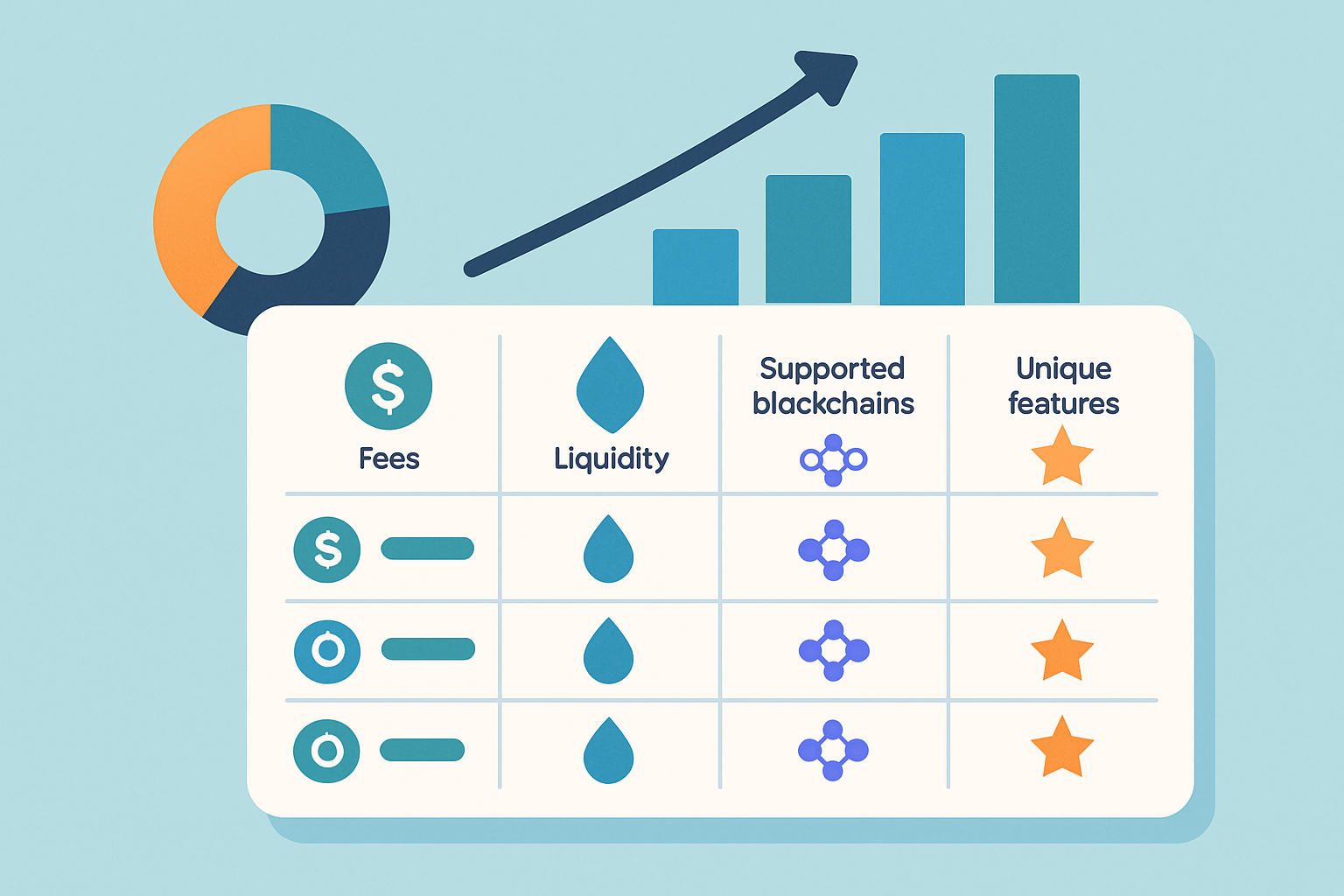
Comparison Table Highlighting the Main Features of Leading Decentralized Exchanges a handy guide to keep you in the know
| Decentralized Exchange | Supported Blockchains | Fee Structure | Liquidity | Unique Features | User Ratings (out of 5) |
|---|---|---|---|---|---|
| Uniswap | Ethereum | Charges a straightforward 0.3% per swap | Extremely High | Pioneered the AMM model and boasts a huge ERC-20 token selection that’s hard to beat | 4.7 |
| PancakeSwap | Binance Smart Chain | Around 0.2% per swap, keeping things affordable | High | Offers more than swaps—think yield farming, fun lotteries, and even an NFT marketplace to boot | 4.5 |
| SushiSwap | Ethereum, BSC, Polygon, others | Charges a steady 0.3% per swap | High | Spans multiple chains and brings cool features like Kashi lending and BentoBox vaults into play | 4.3 |
| Curve Finance | Ethereum | Generally low fees that shift depending on the pool | Extremely High | Laser-focused on stablecoins and famed for keeping slippage to a bare minimum | 4.6 |
| 1inch | Ethereum, BSC, Polygon, Avalanche | Fees vary depending on aggregator | Aggregated liquidity | Specializes in top-notch price routing while lending a hand to optimize those pesky gas fees | 4.4 |
Finding the Decentralized Exchange That Truly Fits Your Needs
Picking the right DEX boils down to what really matters to you—whether it is saving a few bucks on fees, hunting elusive tokens or craving lightning-fast transaction speeds. Take a moment to consider which assets you’re after and the blockchain that suits you best. Also think about how much you trust the platform’s security and how user-friendly it feels—because let’s be honest nobody enjoys wrestling with clunky interfaces.
- Check if the DEX works well with the token ecosystems and blockchains that really matter to your trading style. There is no point in choosing a platform that does not support what you need.
- Take a close look at the platform's security track record. Consider audits and how transparent they are about governance. It’s a bit like detective work, but much more fun when your funds are at stake.
- Make sure there’s enough liquidity in the trading pairs you want so you can avoid unpleasant surprises like slippage.
- Don’t just glance at fees. Compare the full picture, including swap fees and the often hidden blockchain gas costs that can add up faster than you might expect.
- Try out the user interface. It is intuitive or confusing? The smoother the experience, the less time you will spend figuring things out.
- Check out the community and developer support. This gives a good idea of how active and well-maintained the platform is. After all, a lively community usually keeps things running smoothly.
Helpful Tips for Safe and Smooth Crypto Swaps on Decentralized Exchanges
Navigating the world of decentralized exchanges can feel like a bit of a wild west ride, but with a few handy tips up your sleeve, you can keep things running smoothly and safely. Whether you are a seasoned pro or just dipping your toes in, these pointers should come in handy to avoid those pesky pitfalls and make your swaps as seamless as possible.
Make sure you link your DEX activities to a secure wallet with rock-solid private key management—trust me it is worth the extra caution. Keep a close watch on network conditions to handle pesky gas fees. If you can, try to time your transactions when fees run lower. Always double-check smart contract addresses to dodge sneaky scams.
When using top decentralized exchanges (DEX), stashing your funds offline with hardware wallets adds a solid extra layer of security that is hard to beat. Whenever possible, be sure to enable two-factor authentication on any related platforms as it acts like locking the front door twice. It is also wise to keep your software and wallets updated because outdated versions often have pesky vulnerabilities.
Frequently Asked Questions
What makes decentralized exchanges (DEXs) safer than centralized exchanges?
DEXs boost security by cutting out middlemen and letting users keep tight control over their private keys and funds. Unlike centralized exchanges, DEXs lower the chances of hacks or insolvency since the assets aren’t parked with any third party. Plus with no KYC hassles your privacy gets a nice boost and blockchain-based smart contracts ensure transactions stay transparent and trustless — no funny business involved.
Why are gas fees high on Uniswap, and how can I reduce them?
Uniswap rides on Ethereum where gas fees tend to spike when the network’s traffic jams up. To dodge the worst of it try swapping during off-peak hours — late nights or weekends often do the trick. You could also tinker with gas limits manually or hop onto Layer 2 solutions like Arbitrum. If you’re dealing with smaller trades, dabbling on DEXs with lower fees like PancakeSwap on BSC might save you a pretty penny.
How does 1inch ensure I get the best swap rates?
1inch scoops liquidity from a bunch of DEXs and cleverly splits your trade across different platforms to keep slippage and fees in check. Its algorithm constantly scans routes in real time and juggles price, speed, and gas costs. In other words, it takes the headache out of shopping around and helps you squeeze the best possible returns — especially when you’re swapping bigger chunks.
Is Curve Finance only useful for stablecoin trading?
Curve is mainly about stablecoins and pegged assets like wBTC but don’t let that fool you — its low-slippage pools also play nicely with wrapped tokens and offer perks for liquidity providers. Its efficiency makes it a go-to for stablecoin swaps. Savvy users often tap into Curve’s integrations with lending platforms like Aave to cook up more complex yield strategies.
Do I need technical skills to use a DEX?
Not necessarily. Many user-friendly DEXs like PancakeSwap or Uniswap make basic swaps straightforward. That said, it helps to know your way around wallets like MetaMask and concepts like gas fees and slippage settings. For the fancier stuff — lending options on SushiSwap for example — some DeFi know-how comes in handy. A good approach is to start small and learn the ropes as you go.
How do I avoid scams when using decentralized exchanges?
Always verify token contract addresses through official project channels or tools like Etherscan — it’s like double-checking the lock before you walk in. Avoid giving unlimited token allowances and revoke any permissions you no longer need. Stick to well-known audited platforms — the ones on this list fit the bill — and never ever share your private keys. If you’re handling large sums, using a hardware wallet like Ledger can include another level of peace of mind.


